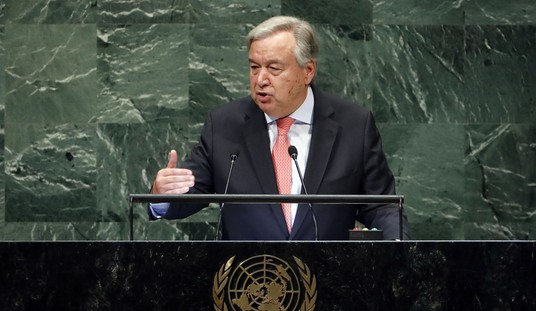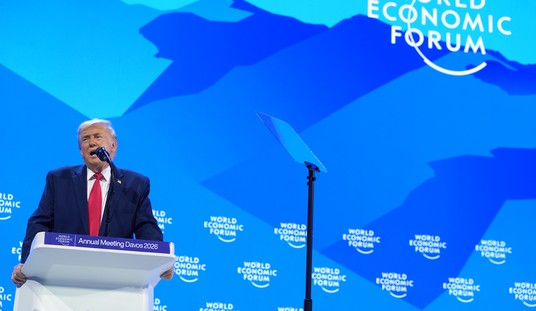This is the weirdest thing about last week’s big announcement, not the fact that it came as an out-of-the-blue surprise to the entire country, including Joe Biden.
Although that’s plenty weird too, make no mistake.
The CDC took an individualist approach to its new guidance about ditching masks. If you personally are vaccinated then your risk of being infected or of infecting others is so low that there’s just no need to take precautions. We’ve all assumed that for awhile but apparently there are a few recent studies that gave the agency more confidence about it, and so evidently they concluded that it wouldn’t be right to keep asking vaccinated people to go on masking up a second longer. When the science says it’s safe, they’re duty bound to relay that message to the public.
Because if they didn’t, if they held back on relaxing their guidance and it leaked that scientists at the agency had discovered that continued masking by the vaccinated was pointless, there would have been a public outcry. Why didn’t the CDC tell us immediately to unmask? Are they trying to get us to keep masking out of some weird vaguely punitive impulse towards hypercaution?
But they didn’t need to take an individualist approach. They could have taken a communitarian approach. Instead of issuing guidance based on what was safe for a vaccinated individual, the agency could have geared its recommendations towards what was safe for the community. We *are* still aiming for herd immunity, aren’t we? The micro goal of the national vaccination effort is to give each person the chance to protect themselves from severe COVID but the macro goal is to suppress the virus at a population-wide level so that even kids and immunocompromised adults can socialize safely, without fear of infection.
In which case why didn’t the CDC lay down a rule tying the masking guidance for vaccinated people to local vaccination rates? E.g., “if 50 percent of the residents in your county have had their first dose, feel free to lift indoor mask mandates in public spaces.” That would have been a stronger incentive for holdouts to go get their shots than the CDC’s individualist approach provided. Under their guidance, most jurisdictions will ed up dropping their mask mandates immediately and letting everyone go unmasked, with unvaccinated people free to lie about their status instead of getting their shots. Under a communitarian approach, mask mandates remain in place until there’s hard data that a certain meaningful percentage of the population has been vaxxed. No “honor system” required.
The Times surveyed hundreds of epidemiologists and asked them what metrics local governments should use for reopening. Guess what most said:

A doctor in Texas whose local community has vaccinated only 36 percent lamented the new CDC guidance to the Times, noting how few people were wearing masks in shops. “I think the C.D.C. might send a wrong message saying that everything’s OK,” he said. “It would feel much better if we had a 60 or 70 percent vaccination.” Derek Thompson captured the danger of the agency’s individualistic one-size-fits-all guidance on masking:
More than 70 percent of adults in New Hampshire have received at least one dose, compared with less than 45 percent in Idaho. The CDC’s announcement seems to treat both states as equally safe when, in fact, states with more vaccinations are obviously much more protected. Following the CDC announcement, the White House released an Instagram message saying, “Fully vaccinated people can stop wearing masks.” But that’s not what the CDC said! The agency carved out exceptions for many places, including doctor’s offices, public transportation, and airports, which collectively employ or receive tens of millions of workers, travelers, customers, and patients. Those exceptions are being steamrolled by a Liberation Day narrative that feels like it came out of nowhere.
Zeynep Tufekci framed the case for keeping mask mandates in place a little while longer in terms of “exponential decay.” Just as infections can increase exponentially when few precautions are in place (see, e.g., India), they can also decrease exponentially when multiple precautions are in place. Mass vaccinations plus social distancing plus masking can drive cases down faster than any single one can and hold them down until we’re at something closer to herd immunity.
Some doctors reacted to the CDC guidance on social media by encouraging people to continue wearing masks for now even if the mandates in their counties are being dropped:

Jha offered an alternative to tying the masking guidance to vaccination rates in a separate thread:
I think states should hold until 6/15 to lift indoor mask mandates
Why?
Is it because fully vaccinated folks are at risk if they go maskless?
No
Do vaccinated people spread the virus? Not really
So why? and why 6/15?
Mainly because of when vaccines became available
thread
— Ashish K. Jha, MD, MPH (@ashishkjha) May 17, 2021
So I agree with CDC's reading of data
Fully vaccinated folks are safe without a mask
But lifting mask mandates means lots of unvaccinated people will also go maskless
So lets wait until 6/15 to lift those mandates
(oh and infection numbers will also be way down by then)
Fin
— Ashish K. Jha, MD, MPH (@ashishkjha) May 17, 2021
We could tie the guidance to a date certain on the calendar simply in order to give people a little more time to complete their course of vaccinations, which should mean fewer infections in the community once the masks really do come off. Leana Wen went so far as to call on Biden to publicly urge states to leave indoor mask mandates in place until they’ve reached a certain threshold vaccination rate. I don’t think that’s realistic, as it would be perceived as Biden undercutting the CDC and meddling with science — and even if he were willing to do it, a public that’s spent the last few days celebrating the end of mandatory mask would bristle at the reversal. But what Wen, Jha, and other experts are doing by piping up about the CDC, I think, is trying to give cover to local officials who are inclined to keep their mandates in place notwithstanding what the CDC said about unmasking. It’s easier for blue-state mayors and governors to sell their constituents on waiting until more people have been vaccinated before tearing their masks off if they can point to scientists somewhere who think that’s a good idea.
The problem is that the states with the lowest vaccination rates are red states and they’re certainly not going to be stricter than the CDC is in encouraging mask-wearing by vaccinated people. Once the agency made its announcement last week, it effectively guaranteed that the pandemic was over in Trumpy parts of the country even though fewer people there are immunized. We’ll see how it works out.
Here’s Wen making the case for tying reopening to vaccination rates.
One week ago, I called on the CDC to offer a roadmap forward. Specifically, I wanted them to say that vaccinated people can be around others who are also vaccinated, and to set metrics tied to vaccination for when mask mandates can be lifted. The CDC went much further than this. pic.twitter.com/HLHjOckefM
— Leana Wen, M.D. (@DrLeanaWen) May 17, 2021







Join the conversation as a VIP Member